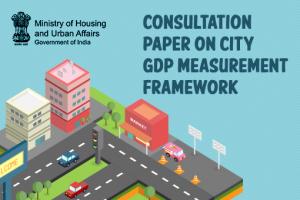- Chandigarh UT
- Creative Corner
- Dadra Nagar Haveli UT
- Daman and Diu U.T.
- Department of Administrative Reforms and Public Grievances
- Department of Biotechnology
- Department of Commerce
- Department of Consumer Affairs
- Department of Industrial Policy and Promotion (DIPP)
- Department of Posts
- Department of Science and Technology
- Department of Telecom
- Digital India
- Economic Affairs
- Ek Bharat Shreshtha Bharat
- Energy Conservation
- Expenditure Management Commission
- Food Security
- Gandhi@150
- Girl Child Education
- Government Advertisements
- Green India
- Incredible India!
- India Textiles
- Indian Railways
- Indian Space Research Organisation - ISRO
- Job Creation
- LiFE-21 Day Challenge
- Mann Ki Baat
- Manual Scavenging-Free India
- Ministry for Development of North Eastern Region
- Ministry of Agriculture and Farmers Welfare
- Ministry of Chemicals and Fertilizers
- Ministry of Civil Aviation
- Ministry of Coal
- Ministry of Corporate Affairs
- Ministry of Culture
- Ministry of Defence
- Ministry of Earth Sciences
- Ministry of Education
- Ministry of Electronics and Information Technology
- Ministry of Environment, Forest and Climate Change
- Ministry of External Affairs
- Ministry of Finance
- Ministry of Health and Family Welfare
- Ministry of Home Affairs
- Ministry of Housing and Urban Affairs
- Ministry of Information and Broadcasting
- Ministry of Jal Shakti
- Ministry of Law and Justice
- Ministry of Micro, Small and Medium Enterprises (MSME)
- Ministry of Petroleum and Natural Gas
- Ministry of Power
- Ministry of Social Justice and Empowerment
- Ministry of Statistics and Programme Implementation
- Ministry of Steel
- Ministry of Women and Child Development
- MyGov Move - Volunteer
- New Education Policy
- New India Championship
- NITI Aayog
- NRIs for India’s Growth
- Open Forum
- PM Live Events
- Revenue and GST
- Rural Development
- Saansad Adarsh Gram Yojana
- Sakriya Panchayat
- Skill Development
- Smart Cities
- Sporty India
- Swachh Bharat (Clean India)
- Tribal Development
- Watershed Management
- Youth for Nation-Building
Discussion on Consultation Paper on City GDP Measurement Framework

Start Date :
Feb 25, 2019
Last Date :
Apr 01, 2019
00:00 AM IST (GMT +5.30 Hrs)
“Dull, inert cities, it is true, do contain the seeds of their own destruction and little else. But lively, diverse, intense cities contain the seeds of their own regeneration, ...


emxay play onlail
thanks for shering6000 rs cash nhi mil rha hai pm kishan yojna ke dowara
The burning issue of farmers in TN is water for agriculture.
With the implementing capability of the Govt demonstrated during 2014-19, if connecting rivers end to end in the Nation is announced and taken up, it will be a boon to the people of the Nation as a whole and probably the best methods to address farmers' plight. An awareness and commitment to do this shall be spoken in all corners of the Nation. People may not hesitate to vote such Govt. that commits to do this. A National Dream.
Inadia can boost GDP by doing various works . If the survey for GDP is given to public and specially to students tha in which field there is increased or decreased. India is agricultural country also so also highlighted on farmers and agricultural products. India also doing well in space . And industrialization is also important aspect to boost GDP. If government is focus in three field it is easily achievable goal . In India we have to do intention on what we do from many years. only work it
Mujhe legta hai ki aadi laghu udiyogo per thatha keti per sarkar thoda aur dhyaan degi to yekinan Desh ki GDP growth karegi kiyki desh ka ek bahut bada hissa keti per tika huaa hai. Desh ke logo ki Income bedegi to unke jeevan ster me sudhar hoga esse GDP bhi grow karegi.
Each city is having a certain importance due to spatial productivity Example: Rajgurunagar Pune; Some cities are good as Agriculture produce some are functioning as service engine Example: Mumbai
A framework is to be established by setting up a parallel feedback system on monthly basis. College students in 2nd year Engineering/ Degree will form a committee and review condition of City in the field of their expertise. They will review position of their seniors in Placement & their family members in health.
Data is Available with students of every stream, Student as aspiring for livelihood & give serious balanced reactions. Students are observing surrounding conditions and discussing about the same. If we provide a platform to them they can assess City level conditions very well.
A framework is to be established by setting up a parallel feedback system on monthly basis. College students in 2nd year Engineering/ Degree will form a committee and review condition of City in the field
Educational aacha ho to GDP growth hogi
Jis desh me gap grow huhi hai o ka education ke waja se
Mai ye nahi kahat ki education aacha nahi hai
Lekin badlaw jaruri hai
First of all I will, appreciate the government step for having discussion on our cities. Today, Indian cities are divided into many tiers and each tier city have same unique requirements. Henceforth government should focus on making city development more inclusive by Involving citizens. The University, and school students will be key to make a difference. Creating city level employment, providing house, medicare, education to all is a prerequisite for city transformation.